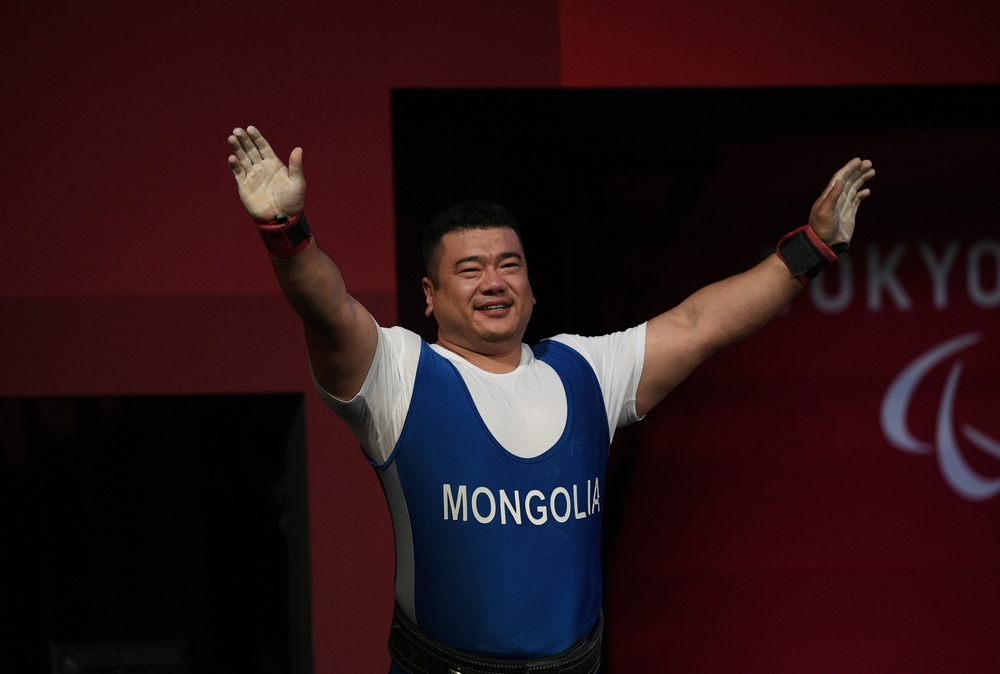Introduction
For any powerlifter, meet day is bound to bring all sorts of jitters even if it isn’t your first rodeo. All athletes face various problems in competition and powerlifters are no exception. Your peaking cycle, rest, and nutrition are all extremely important but we often forget about the psychological aspect of competitions. As much as you can prepare physically before a competition, we are bound to fail if we aren’t mentally ready.
There have been countless stories of athletes that were touted as generational talents, yet choking under pressure and failing to achieve their full potential. Some common difficulties faced by athletes during peaking all the way to their third deadlift attempt include managing competition anxiety, energy conservation, attention, and even simply bringing all the equipment they need. Through psychological skills training, these mental difficulties can often be overcome. So how do we make sure that we don’t fail come competition day?
This article aims to equip you with some basic psychological skills to enhance your performance. It is by no means comprehensive, but we hope that you can utilise some of these tools during your competition prep and on meet day. We will discuss four key techniques (Goal-setting, Imagery, Self-talk, and Music) used by elite athletes to help you decrease competitive anxiety and optimise arousal for peak performance. Keep in mind these tips are not meant to be a quick fix, but have to be practised during your training as well!
1. Goal Setting
Peaking is no doubt a long and arduous process and setting goals is the first step of many. By doing so, you would have something to motivate you throughout your journey. While it is tempting to simply set outlandish goals such as totalling 200kg more than your previous PB total or having a bench press opener 5kg above your current max, goal setting should be approached in a more methodical manner that is deemed achievable given the time frame you have to work with. To do so, three types of goals should be set – Outcome, Performance, and Process goals.
Firstly, set an outcome goal that you would like to achieve at the meet. This goal should be relevant to powerlifting, achievable by your current abilities, and realistic. A simple example would be to set a realistic increase in your total or to break a record. Next, set performance goals that focus on your own performance rather than other people’s performances on the day of the competition. You can set specific targets for each individual lift, such as a 5kg bench press improvement.
Lastly, set process goals to aid you through your individual training sessions. By setting a goal for each session, your focus shifts towards completing each training session, rather than the eventual outcome goal that is still weeks away and difficult to picture. For example, before each training session, you could list out a number of goals that you would like to achieve for that session. This could be the quality of pauses of each bench press or applying a certain cue for all deadlift reps.
It is also important to keep in mind the other changes that you’re making during your peak. Are you cutting to a lower-weight class? Do you have other stressors outside of training that might affect your performance? These factors could impact your daily training and affect the eventual outcome on the meet day. When setting process goals, consider factoring in these stressors and adjusting your goals as such. If you had a long day at work, or have less time for training than you anticipated, adjust your goals for the day accordingly, such as finishing 4 exercises of accessories instead of 5. Remember – we can’t expect to realistically achieve the same targets should life get in the way. However, we can adapt accordingly and make the most out of what we have.
Check out this article on goal setting for a more in-depth tutorial on how to set your goals.
2. Imagery
Imagery is a powerful tool for you to use during training and on competition day. When used during training, imagery can help us to reduce apprehension towards accessories we absolutely detest. We are often fatigued after our main lifts, but creating a positive image in our minds of us performing the exercise can help to enhance the execution. After all, while accessories aren’t the main dish, every tiny brick helps to build a great wall.
In competition, imagery can enhance self-confidence and help us direct attention toward the task at hand. By focusing on aspects of the lifts that require our attention, we tend to get less distracted by other stimuli. Simply try to picture yourself on the platform smashing that PB you worked so hard for.
Here’s a link to the imagery article where you can find more details on how to create an imagery script for the day of the competition.
3. Self-Talk
“If I fail the next lift, I will definitely bomb out”
“The previous attempt felt like an RPE 9.5, can I really jump 5kg?”.
We’ve all had these sorts of thoughts during competition whenever we are faced with a seemingly insurmountable task. This is a form of self-talk; an inner dialogue and statements to the self that has motivational or instructional functions for athletes. While we cannot control the immediate automatic thoughts we have when something catastrophic occurs in competition, we can control the way we respond to that situation in the form of self-talk. While beating down oneself and using negative self-talk might be motivational to some, it might increase competition anxiety and worry in others. Using positive self-talk can help to shift attention towards staying confident and concentrating on the rest of the meet, rather than focusing on negative distractions around us.
So how should we apply self-talk during a meeting? The first step is to be more aware of our negative thoughts and catch ourselves whenever we’re engaging in those thought cycles. We can then use motivational self-talk, which helps us to psych up and build confidence. For example, instead of thinking of how disastrous the meet will go when you get three red lights due to depth on your squat opener, tell yourself,
“I can easily lift this weight. I’ve done this many times in training and the next attempt will be deep.”
What about cues to remind yourself when you lift? This is a form of instructional self-talk, which helps with controlling your anxiety by shifting your attention to the process of lifting. When using instructional self-talk in competition, stick to holistic cue words rather than technical cue words as this directs unnecessary attention toward the mechanical aspects of the lift and leads to overthinking. Perhaps instead of yelling “squeeze your glutes and straighten your legs” or “retract your scapula”, go with “smooth lockout” or “big chest”.
Keep the phrases short, positive, kind to yourself, and in the first person. Practice them often in training and use them with intention. Ultimately, the goal of self-talk is to ensure that you stay focused and goal-directed when the going gets tough. There is no one-size-fits-all, so try to notice what is not working for you and give others a shot!
4. Music
Psyching up for a deadlift with the loudest song you know – sound familiar? Many of us use music in our training and it certainly can add a couple of kilograms to our lifts, but we’re often spoiled for choice with the wide selection out there. So how do we select the perfect psych-up (or psych-down) song?
While there isn’t a perfect song to listen to (yet), there are certain properties of the song that often lead to better performance. To meet conditions i.e. IPF sanctioned meets, we can only listen to music BEFORE the lift. Hence, it is important to understand how we can use music to regulate arousal levels and prepare for optimal performance.
To prepare a playlist for the meet, identify your goals first – do you need a song to calm your nerves or do you need one to psych you up? Slow-tempo music tends to be more relaxing while fast-tempo music tends to be more arousing. Try adding songs of various tempos to your playlist and see how they affect you.
Another factor that we have to consider is our associations with the song. Simply listening to random songs that don’t have any meaning to us might not bring as many benefits as one that does. So there’s no need to listen to a playlist of random Lofi songs to calm your nerves – choose one that you actually like or has personal significance in your life. What about after the meeting? Listening to slower, soothing music after exercise has also shown to have benefits for recovery by decreasing our cortisol levels and eliciting positive affective responses – this means that the recovery process gets kickstarted earlier!
Conclusion
Competitions can be very intimidating for any lifter with so much information to process in so little time. Try these simple strategies and be more intentional in the way you prepare for competitions so you can put yourself in a better position to enjoy the meet without having to worry about unnecessary stimuli. This can greatly reduce the stress felt during competition so that what’s left is simply to finish the job you set out to do.
Powerlifting is a sport built upon its community, so don’t forget to have fun and make friends at the meet!
Feel free to reach out via Instagram @enso.powerlifting or via email ensopowerlifting@gmail.com if you have any questions!
This article and commentary first appeared on ENSO Powerlifting













